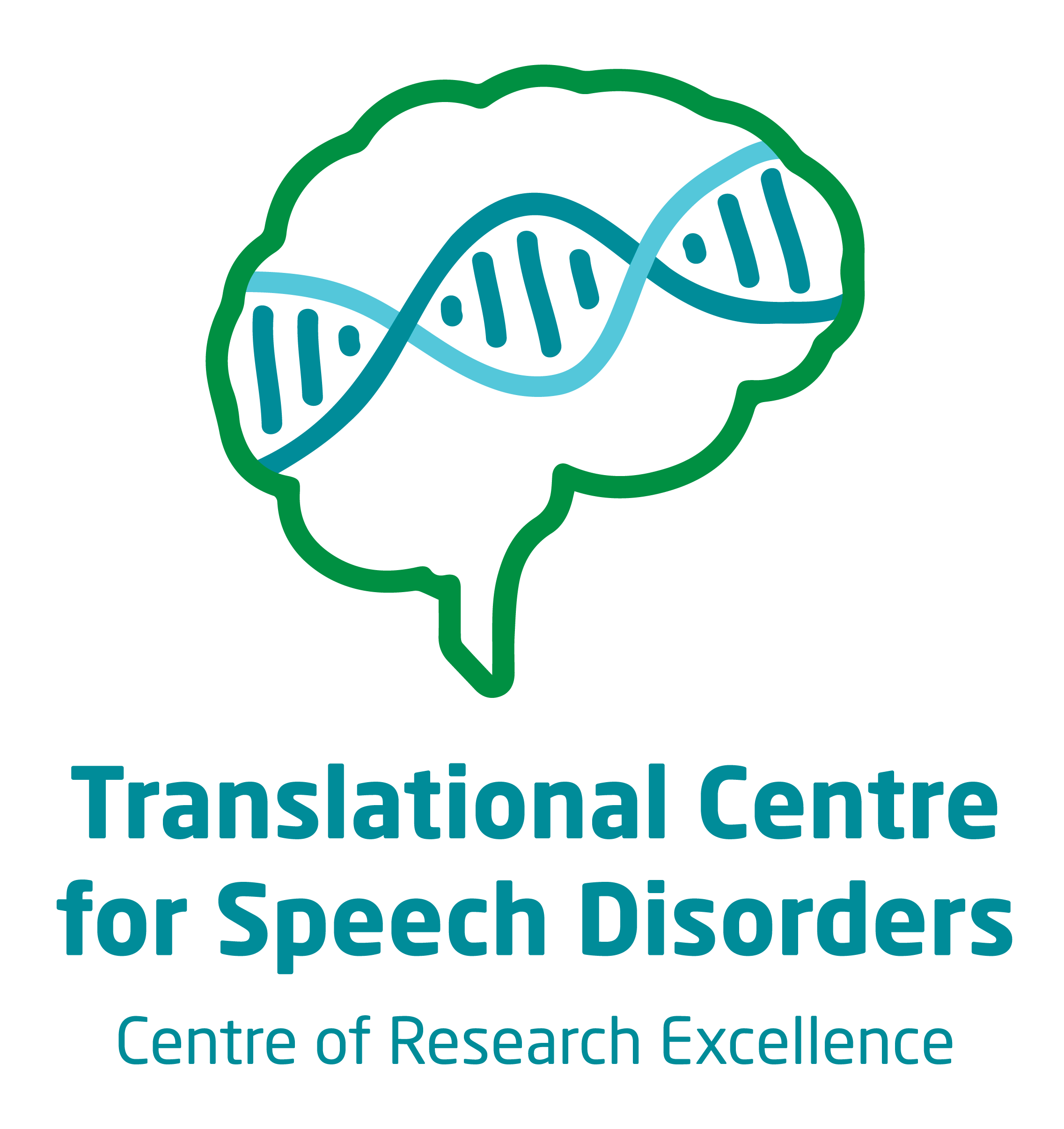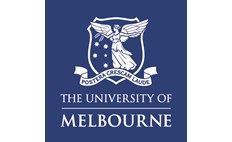Phelan-McDermind syndrome
What is speech and language like in individuals with Phelan-McDermid syndrome?
Phelan-McDermid Syndrome (PMS) is a neurodevelopmental disorder caused by 22q13.3 deletions that usually include the SHANK3 gene. Whilst speech and language development is highly variable in individuals with PMS, the vast majority have severe speech and language difficulties. It is estimated around 70-81% of individuals with PMS are non-verbal. 1,2,3,4 Severity of speech and language difficulties has been associated with 22q13.3 deletion size.2,4
Contact
For further information, do get in touch with the CRE Speech and Language team at:
Email: geneticsofspeech@mcri.edu.au
Phone: (03) 9936 6334
Frequently asked questions
The most common characteristics of PMS are heart anomalies (occur in 92% of individuals), gastro-oesophageal reflux (92%), intellectual disability (85%; mostly in the severe-profound range), seizures (85%) and autism spectrum disorder (82%).2,5 Individuals with PMS tend to perform relatively poorer in language skills and better in motor and/or cognitive skills, depending on their age.3 Understanding of language is reported to be better than expressive language.4,5 Most individuals with PMS are the first in their family to be diagnosed with the condition. It is estimated only 1% of individuals have an inherited 22q13.3 deletion.2
We do not know when individuals with PMS start speaking, however most will be delayed in using first words. We do know that some do not learn to talk, or only learn to use a few single words, well into childhood.4
In the main speech and language study in this group, around half of individuals were minimally verbal with few if many spoken words.4 Individuals who were speaking had unclear speech, characterized by childhood apraxia of speech, and phonological delay and disorder. There was no clear singular speech diagnosis in this group.
We do not fully understand how speech develops over time for individuals with PMS. Speech and language development is likely to be associated with the severity and nature of co-occurring conditions such as intellectual disability and epilepsy. Developmental regression (loss of previously acquired skills) is seen in around 43% of individuals with PMS4,6, mostly in self-help and motor skills after 30 months of age. Around 38% of individuals with PMS (aged between 1-15 years) were found to show no improvement in cognitive functioning over a 5 month period.3
Given severe-profound intellectual disability occurs in around 60% of individuals with PMS2,4, it is likely most children with PMS will need additional support through a specialised school.
There is no research on speech and language interventions that are specifically designed for individuals with PMS. Currently, speech and language interventions for this group are guided by the individual's profile and the best evidence for speech and language disorders more generally. Interventions often involve the use of augmentative communication aides such as key word signing, Picture Exchange Communication Systems® and communication books and boards that contain pictures the child can point to. Speech generating devices (voice output communication aides) are often used and these enable the individual to communicate using an electronic voice.4
There is very limited research investigating adolescents with PMS as a group. Individuals with PMS appear to make slower developmental progress than those without PMS over time.3 In some individuals there may some regression in development.4,6
There has been no research on how speech and language changes across the lifespan for individuals with PMS. For many individuals, speech and language progress will be slower than it is for individuals without PMS.4,5
References
- Oberman, L.M., Boccuto, L., Cascio, L., Sarasua, S., & Kaufmann, W.E. (2015). Autism spectrum disorder in Phelan-McDermid syndrome: initial characterization and genotype-phenotype correlations. Orphanet Journal of Rare Diseases, 10(1), 105.
- Tabet, A.C., Rolland, T., Ducloy, M., Levy, J., Buratti, J., Mathieu, A., Haye, D., Perrin, L., Dupont, C., Passemard, S., Carpri, Y., Verloes, A., Drunat, S., Keren, B., Mignot, C., Marey, I., Jacquette, A., Whalen, S., Pipiras, E., Benzacken, B., Chantot-Bastaraud, S., Afenjar, A., Heron, D., Le Caignec, C., Beneteau, C., Pichon, O., Isidor, B., David, A., El Khattabi, L., Kemeny, S., Gouas, L., Vago, P., Mosca-Boidron, A.L., Faivre, L., Missirian, C., Philip, N., Sanlaville, D., Edery, P., Satre, V., Coutton, C., Devillard, F., Dieterich, K., Vuillaume, M.L., Rooryck, C., Lacombe, D., Pinson, L., Gatinois, V., Puechberty, J., Chiesa, J., Lespinasse, J., Dubourg, C., Quelin, C., Fradin, M., Journel, H., Toutain, A., Martin, D., Benmansour, A., Leblond, C.S., Toro, R., Amsellem, F., Delorme, R., & Bourgeron, T. (2017). A framework to identify contributing genes in patients with Phelan-McDermid syndrome. npj Genomic Medicine, 2, 32.
- Zwanenburg, R.J., Ruiter, S.A.J., van den Heuvel, E.R., Flapper, B.C.T., & Van Ravenswaaij-Arts, C.M.A. (2016). Developmental phenotype in Phelan-McDermid (22q13.3 deletion) syndrome: a systematic and prospective study in 34 children. Journal of Neurodevelopmental Disorders, 8(1), 16.
- Brignell, A., Gu, C., Holm, A., Carrigg, B., Sheppard, D.A., Amor, D.J. and Morgan, A.T., 2021. Speech and language phenotype in Phelan-McDermid (22q13. 3) syndrome. European Journal of Human Genetics, 29(4), 564-574.
- Soorya, L., Kolevzon, A., Zweifach, J., Lim, T., Dobry, Y., Schwartz, L., Frank, Y., Wang, A.T., Cai, G., Parkhomenko, G., Halpern, D., Grodberg, D., Angarita, B., Wilner, J.O., Yang, A., Canitano R., Chaplin, W., Betancur, C., & Buxbaum, J.D. (2013). Prospective investigation of autism and genotype-phenotype correlations in 22q13 deletion syndrome and SHANK3 deficiency. Molecular Autism, 4(1), 18.
- Reierson, G., Bernstein, J., Froehlich-Santino, W., Urban, A., Purmann, C., Berquist, S., Jordan, J., O’Hara, R., & Hallmayer, J. (2017). Characterizing regression in Phelan McDermid Syndrome (22q13 deletion syndrome). Journal of Psychiatric Research, 91, 139-144.






